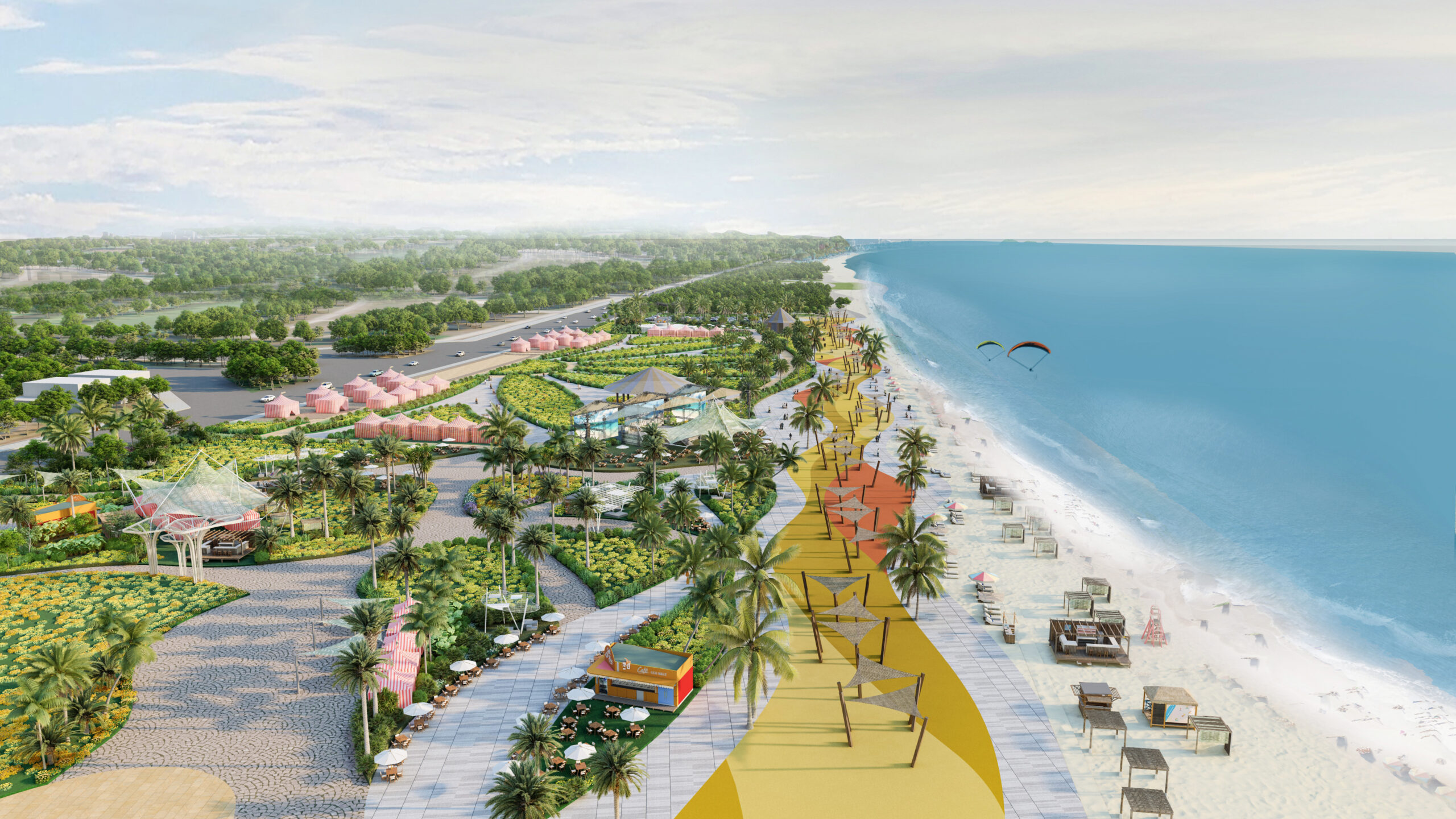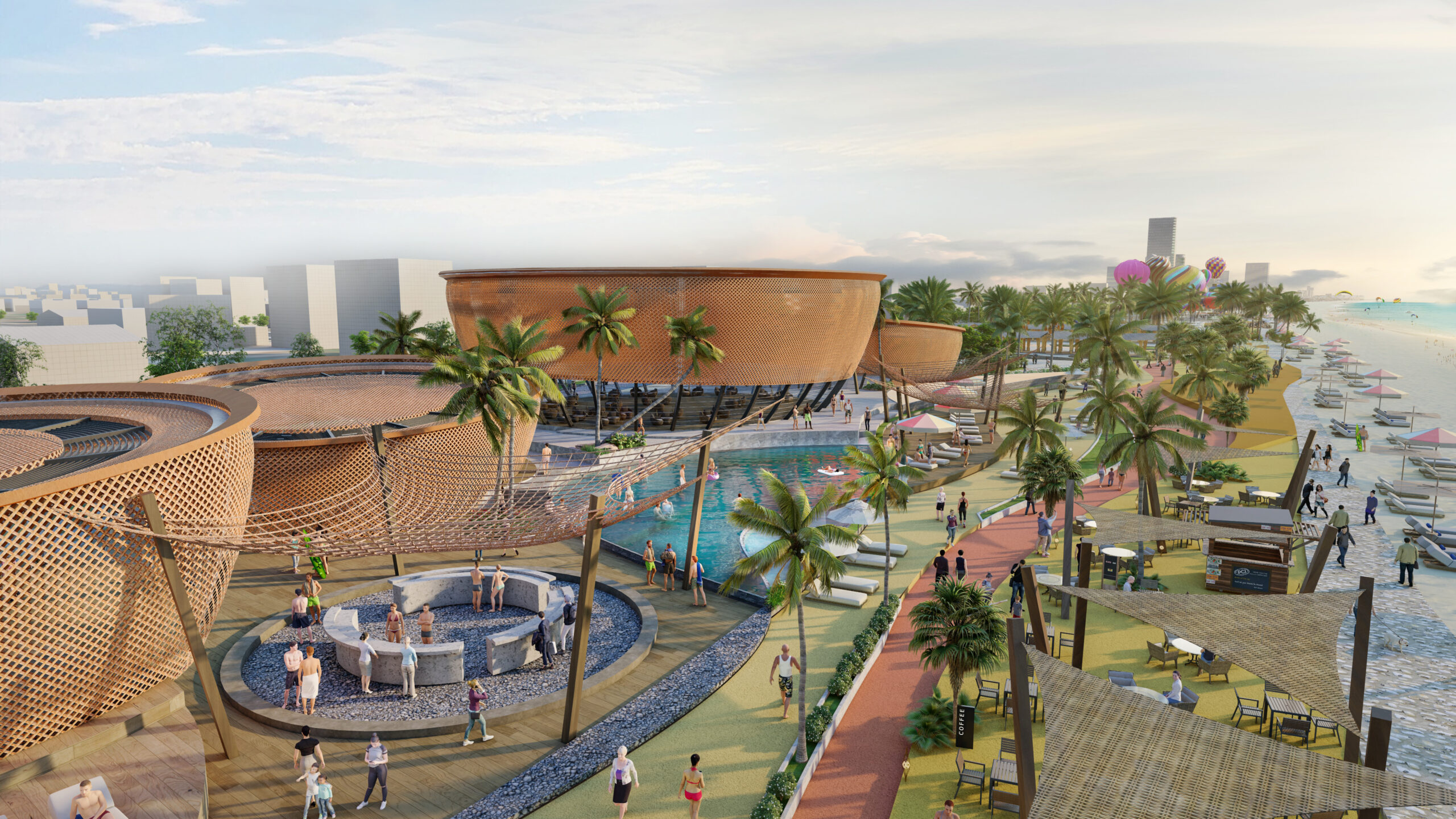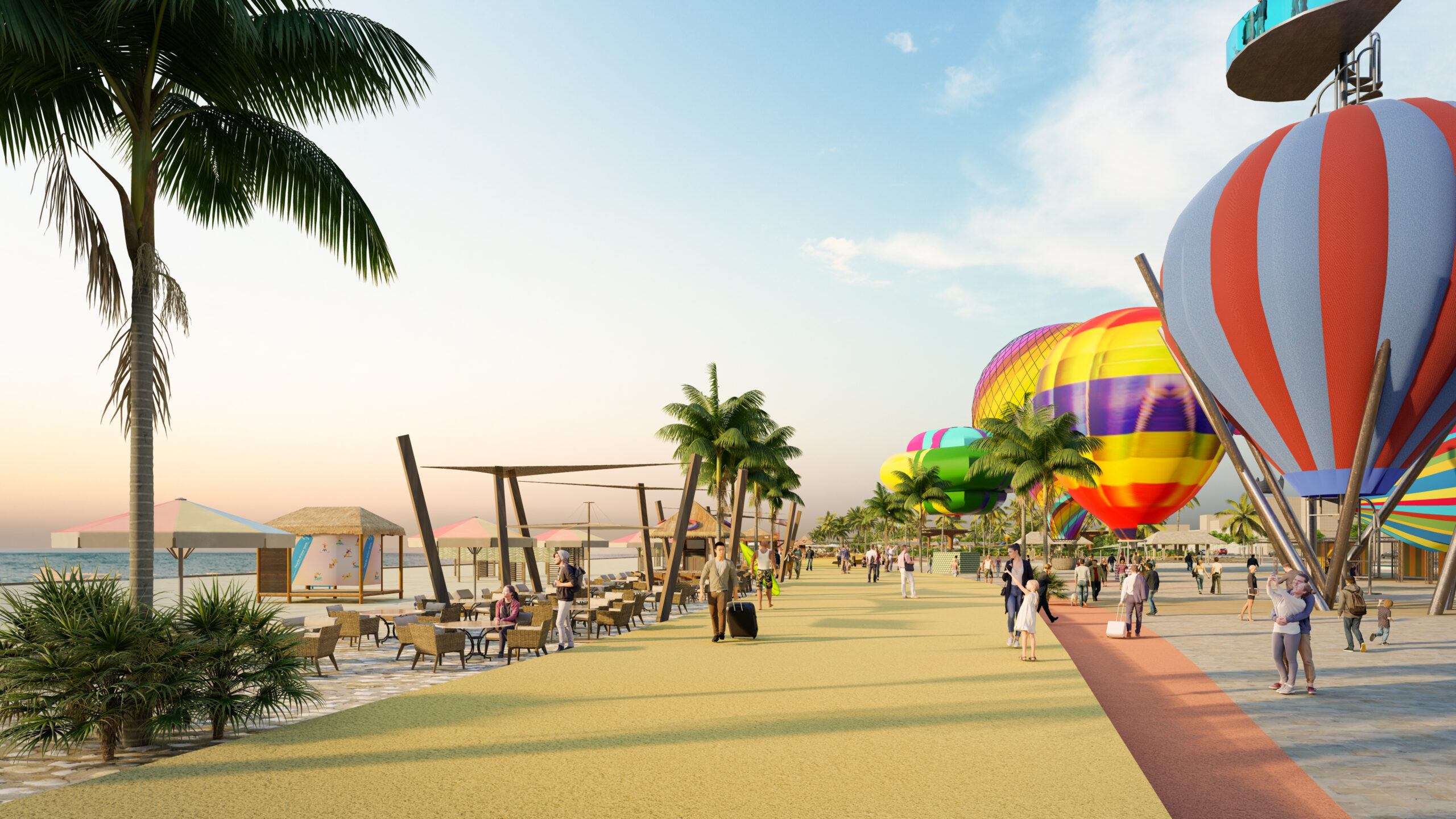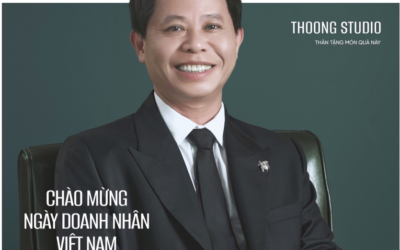It’s 1984. A father and mother, and their four children, are peddling bicycles on a 15-kilometer trek from Vinh City to Cua Lo beach. They go to Cua Lo to swim, but 7-year-old Hiep is fascinated by the port with the ships and the bustling activity of the docks…
Dateline: Vinh City, 2024
I’m seated at Nocenco Coffee with Hoang Nang Hiep and my translator/sidekick, Hanh Cassie. Hiep (the boy from the opening paragraph) is now 47 years old, and he’s Head of the Urban Management Department in Cua Lo. Hiep is very much involved in the current reshaping of his beloved, Cua Lo Beach.

Cua Lo is in the midst of a “facelift,” a new stage in its evolution. One that started in earnest over twenty years ago…
Hiep graduated from Hanoi Architectural University in 2001, with a degree in Civil and Industrial Construction. He returned to Vinh City and began his professional career. His first gig—Cua Lo.
“I had always dreamed of being on the ground floor of a project where we would be starting from scratch. My very first job began in December 2001, designing and constructing seawalls in Cua Lo to protect the beach and coastline from erosion. At the time, Cua Lo had little to no infrastructure, a few dingy hotels, and ramshackle homes.”
Hiep’s professional involvement with Cua Lo continued. Twenty years ago, he was a key player in the creation of the first beachfront restaurant development plan.

“Those original restaurants were little more than bamboo shacks,” Hiep laughed. “But it was the start of developing the beachfront for tourism. A few years later, we entered another phase—building the restaurant row with brick-and-mortar establishments. That was quite successful, but now it is time to move to the next level. Therefore, we have removed the restaurants and are in the process of something grand.”
Needless to say, I was curious as to what we could expect, fearing massive developments. Hiep was quick to put me at ease.
“There will be themed areas, such as the Caribbean Beach Club, the Tropical Polynesian Beach, and a Scandinavian themed club, amongst others. But these are designed to blend, not overwhelm. Our plan for the beach is 5% structures and 95% nature. It will be modern yet green, clean, eco-friendly—and fun!

“The goal is to realize Cua Lo as a year-round destination rather than seasonal. There will be more activities, a nightlife (including a bustling night market), an entertainment complex, and more. A waterpark will open soon, as will the sky-tram, which will usher guests to Dao Ngu Island, where they can hike, visit the old temple, and also enjoy a new complex resplendent with restaurants, cafés, and entertainment.”
To this writer, it sounded as if Cua Lo was on a natural, progressive step into the future without abandoning its history.
“100 years ago,” Hiep intoned, “Cua Lo was a playground for French aristocrats—in much the same vein as Da Lat. In a sense, we are recrowning this precious, idyllic destination to its proper status.”
Will Cua Lo become just another high-end resort destination? I asked. Hiep’s was quick to respond.
“There will be high-end accommodations, for what we believe will be an influx of western tourists, but the many mom-and-pop hotels and restaurants will remain, and the local community will benefit from the increased tourist traffic. The night market will help locals, and fishing excursions will help our local fishermen—local arts and crafts will be encouraged. This evolution will be an opportunity for locals to expand their businesses while creating new opportunities and jobs for our youth. A chance for 12 months of economic boon rather than just 3 or 4.”

Speaking with Hiep brought both comfort and relief. I’ve been following the construction closely, wondering and pondering Cua Lo’s fate. After my session with Hiep, I believe Cua Lo is in good hands—caring hands, loving hands.
As we finished our coffee, I asked Hiep to imagine himself as that little boy on the bike. Leaving Vinh in 1984 but arriving in Cua Lo in 2025. What would the boy think? I asked.
Hiep closed his eyes and then smiled. “I think he will be surprised, but not shocked. He will see his beach, the trees, and wildlife. But he will also see something of enchantment. Architectural splendor in harmony with its surroundings. The boy will be proud.”
{Writer’s Note: Images 2, 4, and 5 are artist renditions}.





0 Comments